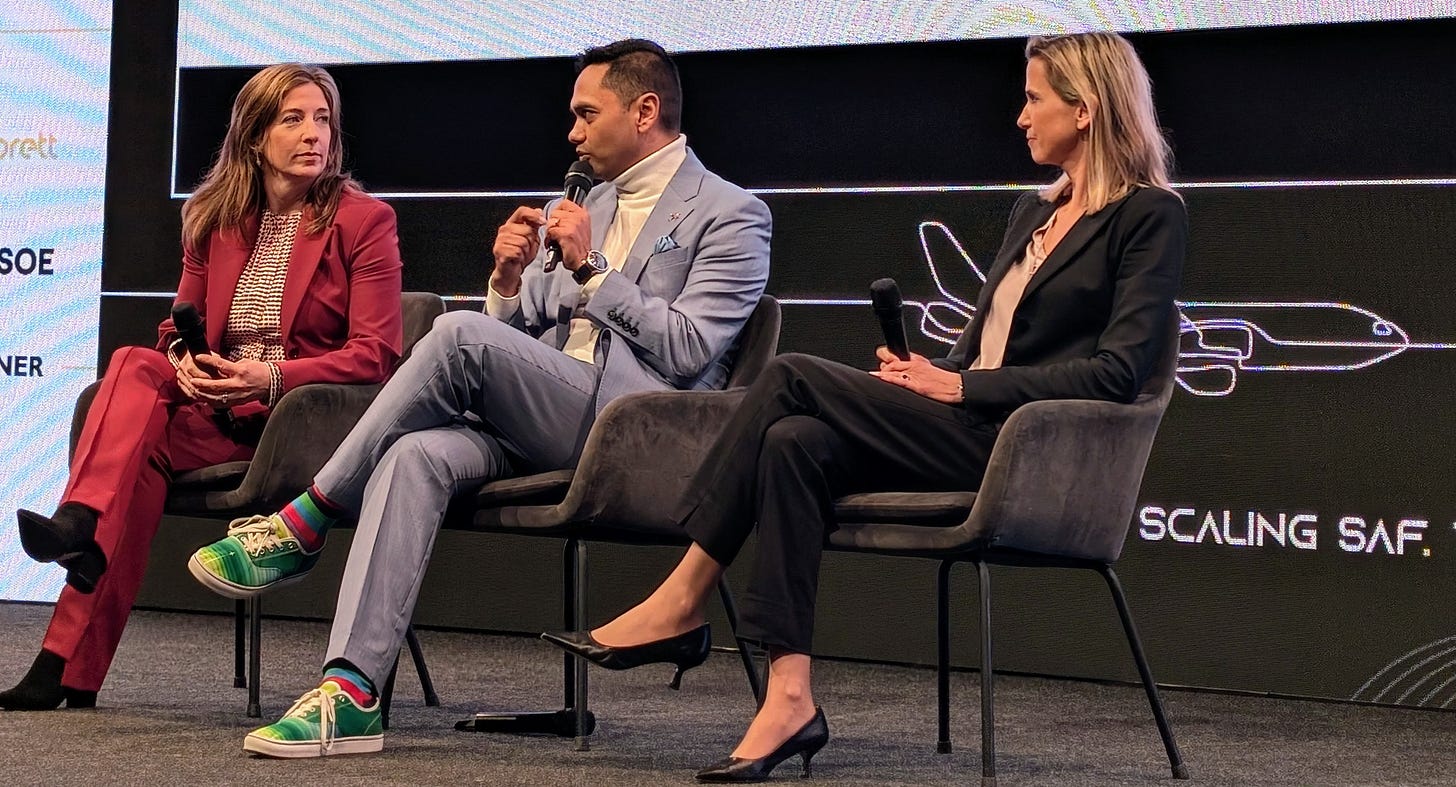Beyond green promises: Airbus & OMV’s blueprint for scaling SAF
How feedstock innovation, market enablement, and demand aggregation are shaping aviation’s net-zero future.
Earlier this year, energy producer OMV and aerospace giant Airbus announced they had formed a strategic alliance to tackle one of aviation's most pressing challenges: decarbonisation through sustainable aviation fuel (SAF).
At the recent Sustainable Aviation Futures Congress in Amsterdam, SimpliFlying Founder and CEO, Shashank Nigam, moderated a conversation between Nina Marczell, Senior VP at OMV, and Julie Kitcher, Chief Sustainability Officer at Airbus, uncovering how this cross-industry partnership aims to transform aviation's environmental footprint.
A partnership built for impact
This alliance, signed in January, directly addresses aviation’s carbon emissions, with SAF positioned as the near-term pathway to net zero.
Kitcher emphasised the immediacy of the challenge: "It's a key partnership. And I think it's important for us all to remember and be able to transmit that message that SAF is the fuel of today. That's why now."
The collaboration leverages OMV’s existing SAF production, including its Schwechat, Austria facility and a planned SAF/HVO plant at the Petrobrazi refinery in Romania.
Marczell added, "Our partnership with Airbus is all about creating real change and driving real change to cut CO2 emissions in the aviation industry. Our two teams have joined forces to work on scalable and practical solutions to elevate the SAF market."
Key initiatives include:
Feedstock innovation: Testing new sources beyond used cooking oil to ensure scalability.
Market enablement: Educating stakeholders and developing SAF certificate systems (akin to renewable energy credits) to simplify corporate adoption.
The scale-up imperative
SAF currently accounts for less than 1% of global aviation fuel, yet EU mandates require 6% by 2030, with the UK targeting 10%. Consequently, global demand is projected to hit 34 million tons by 2030 and double by 2035.
Kitcher outlined the challenge:
"What we're lacking is SAF at scale, at an affordable price, so that we have a business model available to every member of the brand chain from the airline customer right the way back down to the producer and the feedstock provider."
The partnership’s first step? A joint analysis of market gaps, particularly for smaller operators struggling with cost barriers.
Democratising SAF access & breaking the feedstock bottleneck
Airbus and OMV are pioneering demand aggregation models to lower costs for smaller players, mirroring successful renewable energy certificate systems. "It's an opportunity to aggregate a larger pool of demand and secure offtakes at a more reasonable price," noted Kitcher.
With 70-80% of SAF relying on limited HEFA feedstocks, diversification is critical too. Kitcher stressed: "We need to explore other production pathways. Alcohol-to-jet, for example, is in the making. E-fuels too, but they'll come probably a bit later."
OMV is already scaling solutions, including co-processed SAF production since 2022 and a commitment to deliver 1.5 million tons of SAF by 2030.
Kitcher also delivered a stark reminder: "2030 in aviation language is tomorrow, 2050 is the day after tomorrow because the product life cycle is 22 and a half years plus."
As a result, she reminded the audience that decisions today will shape the technologies available in the 2040s.
The way forward
The partnership is also forward-looking, with OMV commissioning Austria’s largest electrolyser (10 MW) to explore hydrogen’s role in e-fuels and future hydrogen-powered flights.
Kitcher framed the broader mission: "Sustainable aviation needs unprecedented collaboration. The ecosystem has broken borders, it’s expanded beyond traditional aviation."
Further, Marczell rejected perfection paralysis: "It’s important to take smaller steps in a row, then you look back and see significant progress."
Kitcher closed with a call to action: "It's about getting concrete and decisive today. I'm a big believer in turning MOUs into action."
This partnership sets a new standard for cross-industry collaboration, balancing immediate SAF scaling with long-term innovation. For aviation leaders, the message is clear: decarbonisation won’t wait, and neither can we.




